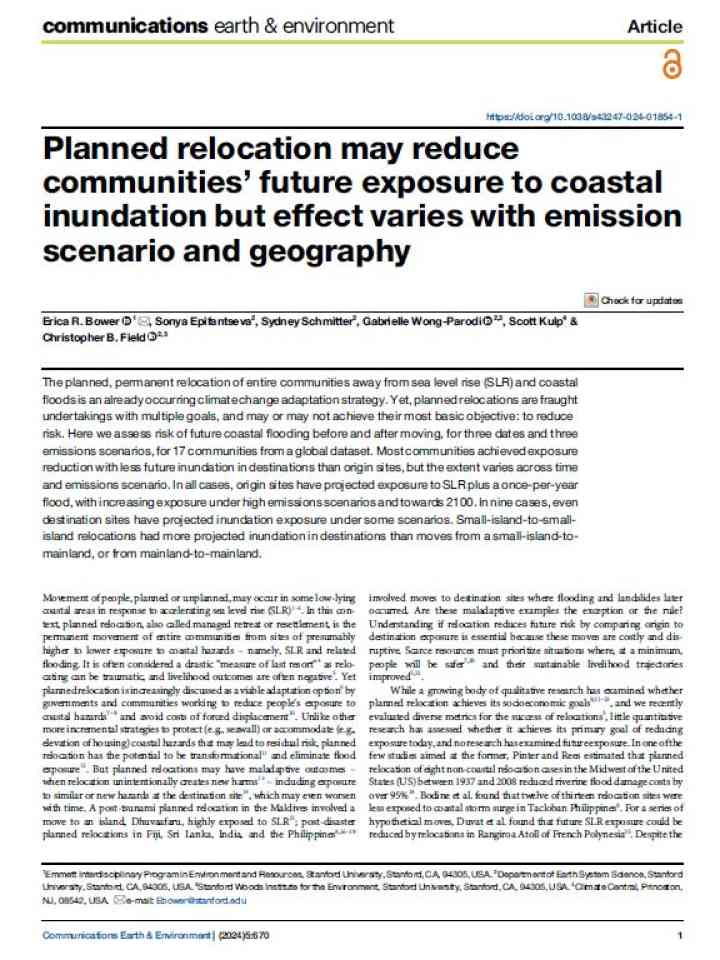Planned relocation may reduce communities’ future exposure to coastal inundation but effect varies with emission scenario and geography
This study assesses risk of future coastal flooding before and after moving, for three dates and three emissions scenarios, for 17 communities from a global dataset. Most communities achieved exposure reduction with less future inundation in destinations than origin sites, but the extent varies across time and emissions scenario.
The planned, permanent relocation of entire communities away from sea level rise (SLR) and coastal floods is an already occurring climate change adaptation strategy. Yet, planned relocations are fraught undertakings with multiple goals, and may or may not achieve their most basic objective: to reduce risk.
In all cases, in this study, origin sites have projected exposure to SLR plus a once-per-year flood, with increasing exposure under high emissions scenarios and towards 2100. In nine cases, even destination sites have projected inundation exposure under some scenarios. Small-island-to-small-island relocations had more projected inundation in destinations than moves from a small-island-to-mainland, or from mainland-to-mainland.
Explore further

